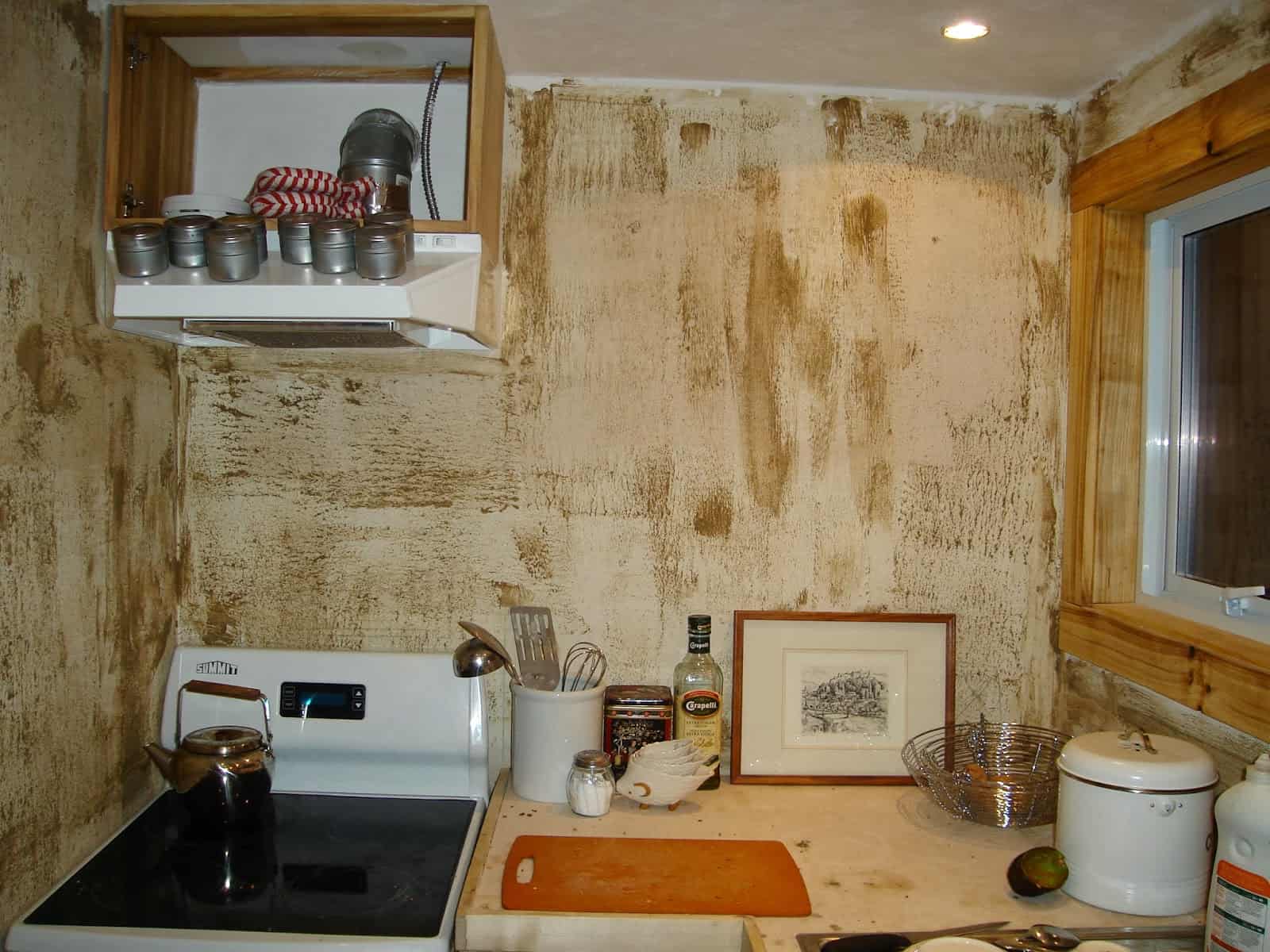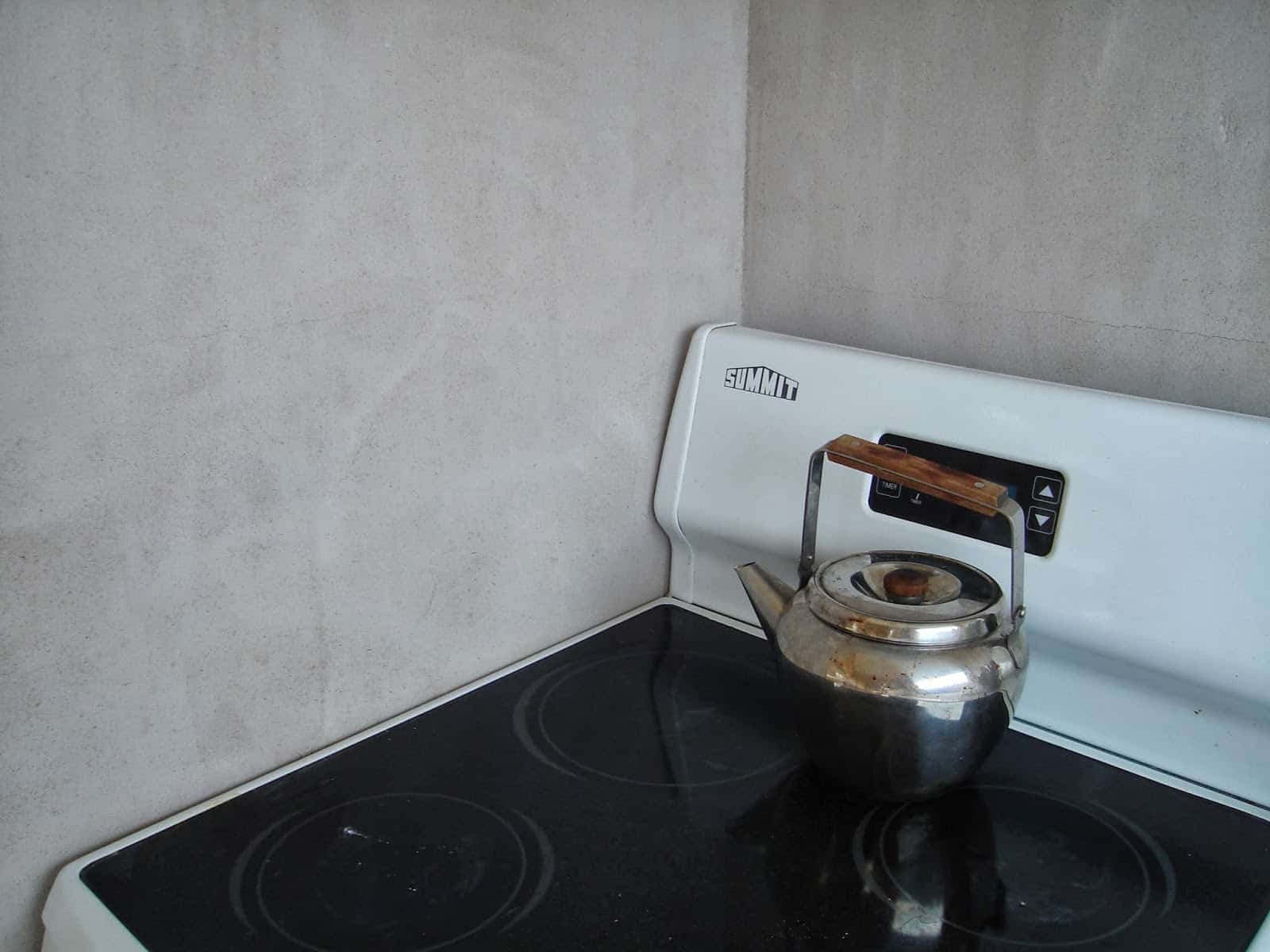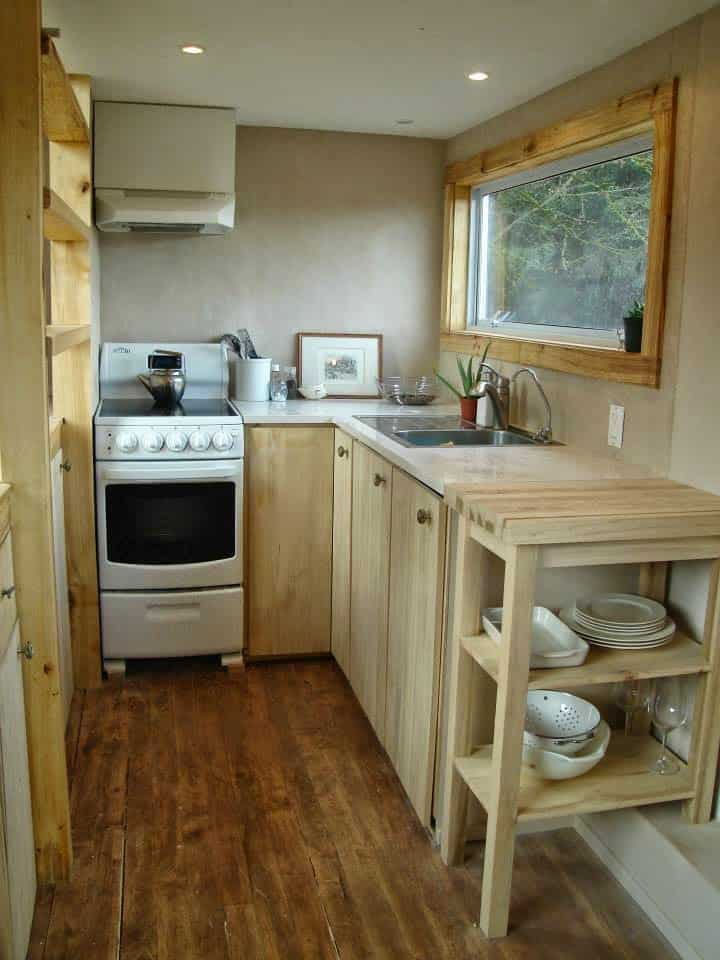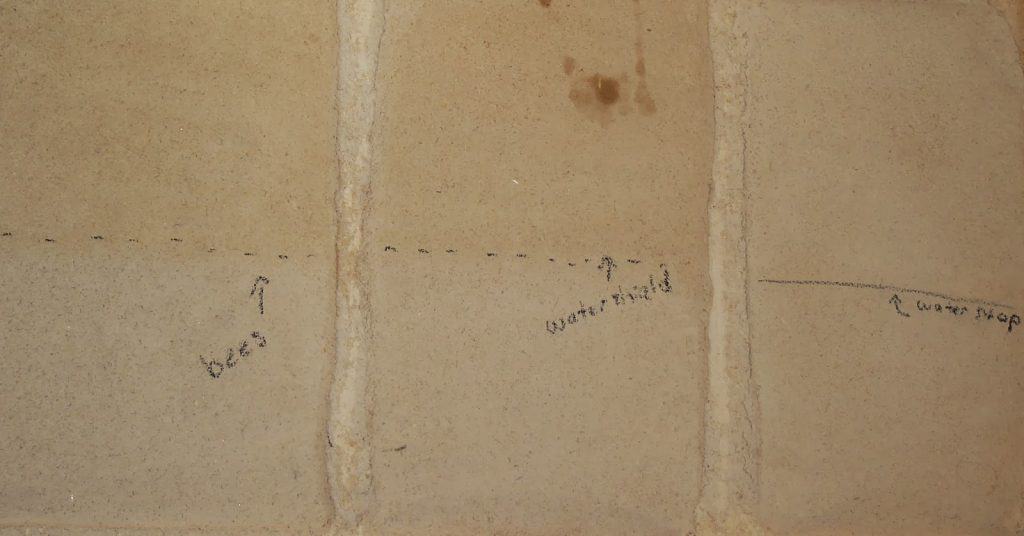I used clay plaster throughout my tiny house on wheels, including the kitchen, over MgO walls, with oiled wood on the trim but there are a few things I would have done differently.
This post contains affiliate links. Upon purchase, I earn a small commission at no extra cost to you.
Should you use Clay or Lime Plaster?

Plaster over wallboard requires a textured substrate – a wheat paste primer was used under my clay plaster, which could become problematic (mold-wise) if the humidity level is not kept low.
The plaster was custom mixed, but American Clay Plaster is very similar (and comes in a variety of colors). (Note: the natural color of my plaster turned out to be quite grey although I wanted it to be white).
A fiber needs to be used in the plaster which you must test before using. Alex used cattails found by the side of the road.
In hindsight, I would have used lime plaster throughout the living space and kitchen so that I could have done tadelakt in the kitchen (more on tadelakt below) while keeping the color consistent throughout.
Lime is naturally very mold-resistant though still requires a textured substrate (wheat paste or mesh?) (Lime plaster would have also been a lot whiter.)
Problems with Plaster over MgO Board

The MgO board and plaster in my tiny house cracked at every seam. We used joint tape and Murco joint compound at the seams but this did not stop it from cracking. (Turns out Murco is great for regular wallboard but not for MgO board.
For MgO board, One Pass joint compound is recommended. Even where we waited for the boards to settle and crack – re-taped and re-Murco-ed the seams, the boards and plaster still cracked along those lines.
Moving the house did not cause further problems, most of the cracking happened in the first move when it was delivered (which was before it was plastered), the first winter when temperatures changed, and when we were banging new insulation into the walls.
Clay Paint over MgO Board
Clay paint does not adhere to MgO board at all! We tried various times with various primers and in different thicknesses and it cracked and flaked off each time.
Lime paint/lime wash also does not adhere to MgO board. It has flaked off in every consistency. Whether there is a trick to getting clay paint or lime paint to adhere to the wall I don’t know what it is.
Problems with Wood Next to Plaster
Another challenge was that the hemp oil on the wood window/door frames seeped into the plaster slightly even though the wood had been oiled months before, was oiled before it was nailed to the wall, and seemed totally dry at the time we plastered.
It is not a huge deal but I imagine if we had not waited so long for the oil to dry it would have been a much bigger problem.
Burnishing Plaster and Tadelakt Finishes
Tadelakt is an amazing waterproof finish for lime plaster. It is a non-toxic finish which involves burnishing with an olive oil soap for many hours.
I wanted to tadelakt the backsplash of my kitchen because it’s waterproof, but since we used clay in the living space and could not match the lime plaster to the clay plaster color, I ended up using clay plaster in the kitchen.
Alex plastered my kitchen (pictured below) and burnished the plaster, which smoothed it a little, but did not make a huge difference.

Sealing Clay Plaster: My Results from Testing VOC-Free Sealers

I tested three different sealers for the clay plaster in my kitchen, which needed to hold up as a backsplash around the stove and sink.
From left to right I tested: beeswax, AFM Safecoat WaterShield (2g VOC/Litre), and AFM Safecoat Penetrating Water Stop (zero-VOC) (one and two coats), on burnished clay plaster.
I splashed Worcestershire sauce on the samples, waited a few seconds, and then wiped it off with a sponge.
The Penetrating Waterstop was the only one that fully protected the plaster from the sauce. Two coats, however, turned white and blotchy.
Note, the beeswax also changed the color of the plaster a little yellow but it’s not possible to see that in the picture.
So, it was an easy decision since the AFM Penetrating Waterstop worked and had no discernable chemical smell to me at all.
This has been holding up fairly well over the last couple of years but when oil splashes onto it around the stove it does not wipe off easily. It is not the ideal backsplash in a kitchen but it works well enough if you are careful.
Corinne Segura holds certificates in Building Biology, Healthier Materials and Sustainable Buildings, and more. She has 10 years of experience helping others create healthy homes.
Did you find this post helpful? If so you can buy me a coffee to support the research behind this blog. Thank you!

Erin
Hi!
I’d like to use the waterstop product on our plaster hood – So did you only try two coats of The Penetrating Waterstop or did you try one as well? I’m hoping that one coat is enough since two turned white and blotchy.
Corinne
I tried both and then did one coat on my walls around the kitchen.
Kay
Can you recommend a non-toxic way to get rid of orange peal texture and create a smooth surface? I’d like to apply a limewash paint but would like to smooth out the walls first. Thank you!
K
Our MgO boards settled in a well-settled house and popped every seam and at each screw location well after they were properly finished. I won’t use it again, glad to see we aren’t alone!
Corinne
ugh yeah me neither
Simply Natural Events
Did you find a paint primer that worked on MgO? Also, have you had any health issues with the MgO?
Corinne
I used Mythic primer in the bathroom which is no longer available. MgO had a smell that never went away. Some people react to i.
Slarty Melger
The second kitchen has a nice finish to it in my opinion. I think I could go for the Tadelakt style of plastering. It would give it a nice feel, I think and we could avoid water damage. I'll have to see what my wife thinks though. She usually calls the shots anyway.
http://www.oldworldplasteringinc.com/services
Unknown
Hello, I'm a lyme disease patient with extremely high chemical sensitivities, so high in fact I'm trying to build my own bubble (chemical free home) to live in because my house is making me horribly sick. We're planning on using MgO board with American Clay, however I saw your post stating that the clay doesn't work on the MgO board. I'm curious if I could could offer up more information on this matter? It would be greatly appreciated! [email protected]
Corinne
clay plaster worked but clay paint did not. american clay will be fine but needs a substrate
Gretchen Camilleri
Did the mag boards crack or was it the plaster cracking?
Corinne
the boards and plaster cracked along the seams. the plaster cracked in a few other random places too
Anaphylaxing
Great post. Your kitchen looks lovely!